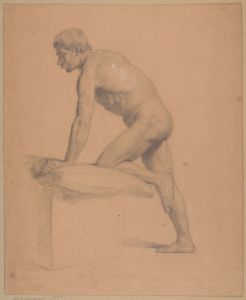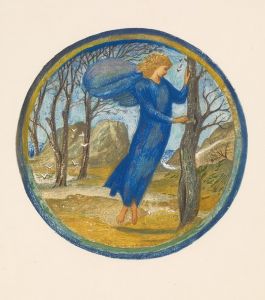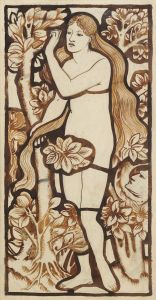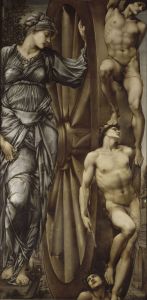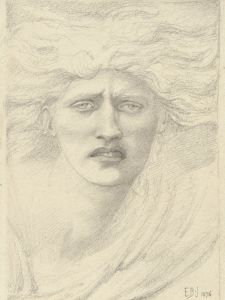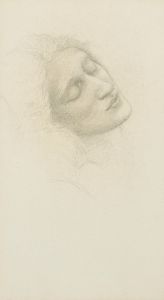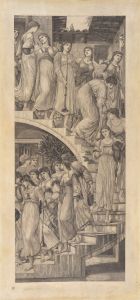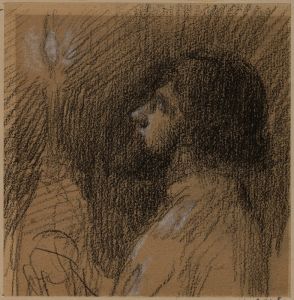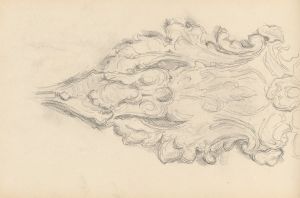
St George Series – Two Studies of Female Attendants for ‘The Princess draws the fatal Lot’
A hand-painted replica of Sir Edward Coley Burne-Jones’s masterpiece St George Series – Two Studies of Female Attendants for ‘The Princess draws the fatal Lot’, meticulously crafted by professional artists to capture the true essence of the original. Each piece is created with museum-quality canvas and rare mineral pigments, carefully painted by experienced artists with delicate brushstrokes and rich, layered colors to perfectly recreate the texture of the original artwork. Unlike machine-printed reproductions, this hand-painted version brings the painting to life, infused with the artist’s emotions and skill in every stroke. Whether for personal collection or home decoration, it instantly elevates the artistic atmosphere of any space.
Sir Edward Coley Burne-Jones was a prominent British artist and designer associated with the Pre-Raphaelite Brotherhood, a group that sought to return to the detail, intense colors, and complex compositions of Quattrocento Italian art. Among his many works, the "St George Series" stands out as a significant contribution to the Pre-Raphaelite movement. Within this series, "Two Studies of Female Attendants for ‘The Princess draws the fatal Lot’" is a notable piece that reflects Burne-Jones's meticulous attention to detail and his fascination with medieval themes and legends.
The "St George Series" is a collection of paintings and studies that depict the legend of Saint George, a Christian martyr and dragon-slayer who became a symbol of chivalry and valor. Burne-Jones's interpretation of this legend is imbued with his characteristic romanticism and idealism. The series was created during a period when Burne-Jones was deeply engaged with medieval themes, often drawing inspiration from Arthurian legends and classical mythology.
"Two Studies of Female Attendants for ‘The Princess draws the fatal Lot’" specifically focuses on the preparatory studies for one of the scenes in the series. This particular scene involves the princess, who is central to the narrative of Saint George and the Dragon. The studies showcase Burne-Jones's skill in capturing the grace and poise of his subjects, as well as his ability to convey emotion and narrative through composition and form.
In these studies, Burne-Jones employs a delicate and precise line to render the figures of the female attendants. The attention to detail in their attire and expressions reflects the artist's dedication to authenticity and his desire to evoke a sense of timeless beauty. The attendants are depicted with a serene and contemplative demeanor, which is characteristic of Burne-Jones's style. This approach not only highlights the artist's technical prowess but also his ability to imbue his works with a sense of narrative depth and emotional resonance.
The studies are executed in a manner that emphasizes the ethereal and otherworldly qualities often associated with Burne-Jones's work. His use of soft, flowing lines and subtle shading creates a dreamlike atmosphere, inviting viewers to immerse themselves in the mythic world he portrays. The figures are elegantly posed, their gestures and expressions suggesting a quiet anticipation of the unfolding drama.
Burne-Jones's work on the "St George Series" and these studies, in particular, exemplifies his commitment to the ideals of the Pre-Raphaelite Brotherhood. His focus on beauty, narrative, and historical themes resonates throughout his oeuvre, making him a pivotal figure in the late 19th-century art scene. The studies for "The Princess draws the fatal Lot" not only contribute to the overall narrative of the St George legend but also stand alone as exquisite examples of Burne-Jones's artistic vision and skill.





